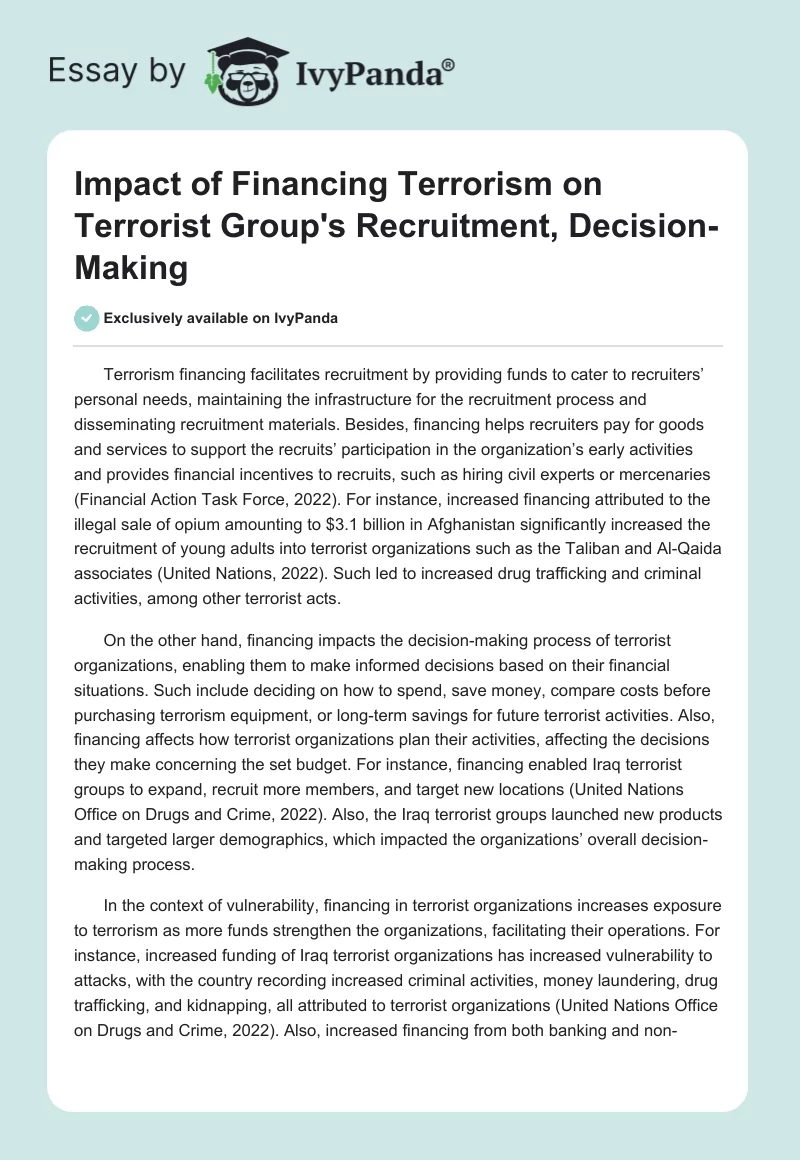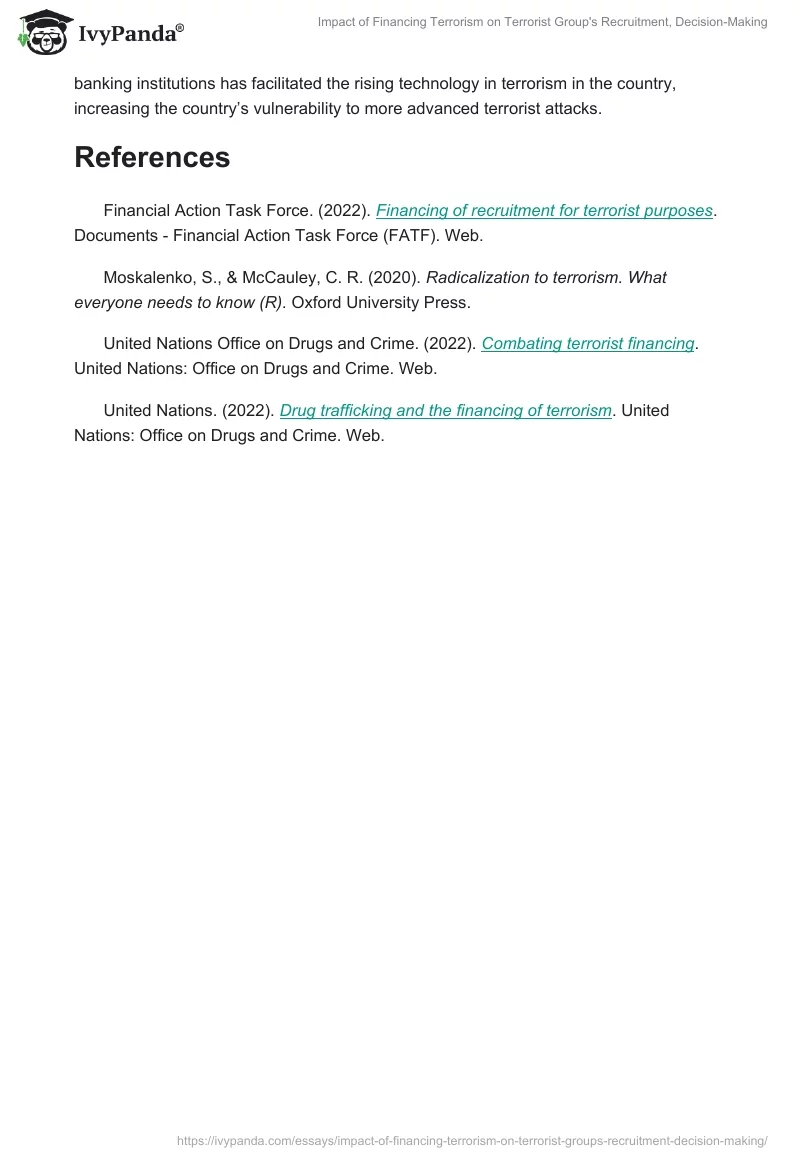Terrorism financing facilitates recruitment by providing funds to cater to recruiters’ personal needs, maintaining the infrastructure for the recruitment process and disseminating recruitment materials. Besides, financing helps recruiters pay for goods and services to support the recruits’ participation in the organization’s early activities and provides financial incentives to recruits, such as hiring civil experts or mercenaries (Financial Action Task Force, 2022). For instance, increased financing attributed to the illegal sale of opium amounting to $3.1 billion in Afghanistan significantly increased the recruitment of young adults into terrorist organizations such as the Taliban and Al-Qaida associates (United Nations, 2022). Such led to increased drug trafficking and criminal activities, among other terrorist acts.
On the other hand, financing impacts the decision-making process of terrorist organizations, enabling them to make informed decisions based on their financial situations. Such include deciding on how to spend, save money, compare costs before purchasing terrorism equipment, or long-term savings for future terrorist activities. Also, financing affects how terrorist organizations plan their activities, affecting the decisions they make concerning the set budget. For instance, financing enabled Iraq terrorist groups to expand, recruit more members, and target new locations (United Nations Office on Drugs and Crime, 2022). Also, the Iraq terrorist groups launched new products and targeted larger demographics, which impacted the organizations’ overall decision-making process.
In the context of vulnerability, financing in terrorist organizations increases exposure to terrorism as more funds strengthen the organizations, facilitating their operations. For instance, increased funding of Iraq terrorist organizations has increased vulnerability to attacks, with the country recording increased criminal activities, money laundering, drug trafficking, and kidnapping, all attributed to terrorist organizations (United Nations Office on Drugs and Crime, 2022). Also, increased financing from both banking and non-banking institutions has facilitated the rising technology in terrorism in the country, increasing the country’s vulnerability to more advanced terrorist attacks.
References
Financial Action Task Force. (2022). Financing of recruitment for terrorist purposes. Documents – Financial Action Task Force (FATF). Web.
Moskalenko, S., & McCauley, C. R. (2020). Radicalization to terrorism. What everyone needs to know (R). Oxford University Press.
United Nations Office on Drugs and Crime. (2022). Combating terrorist financing. United Nations: Office on Drugs and Crime. Web.
United Nations. (2022). Drug trafficking and the financing of terrorism. United Nations: Office on Drugs and Crime. Web.


